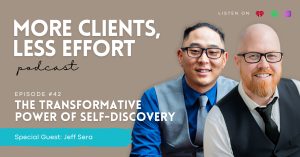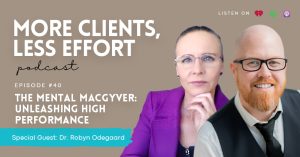
If you want to grow your business, you need to generate content to share with your audience. Here’s are some shortcuts to creating great content.
“There is nothing to writing. All you do is sit down at a typewriter and bleed.”
There are a few things in life which you can’t avoid, whether you are good at them or not.
Cooking is one example. You’ve got to eat, so unless you want to hit the drive-through or stick to sandwiches every night of your life, you at least need a few basic recipes up your sleeve.
Writing is another. The written word is so powerful and so important. When you run a business, you will realise just how important it is to get the words right and draw in an audience.
With the evolution of the internet, writing has become even more important. This is because so many businesses rely on a content strategy to draw in leads. The catch is that if you’re not an accomplished writer you risk publishing content which doesn’t achieve its goals.
However, just like you can prepare a store-quality cake using packet mix, there are lots of shortcuts to producing excellent articles. Let me walk you through the steps which will help you prepare delicious content…
Plan your topics
First, decide what you are going to write about. An easy place to start is by looking at or thinking of your customers’ FAQs.
‘How much does it cost to…..’
‘What are the benefits of….’
‘Why does it take so long to….’
All these questions can easily be turned into 600 word blog posts.
Another way to generate topic ideas is to see what people are searching for. For example, if you make custom jewellery, you may do some research and find out people are interested in Fair Trade Gold. Write some articles about the benefits and costs involved to draw customers your way.

[This butcher creates seasonal content while prompting customers to buy more meat]
Create a content calendar and plan a few months in advance so you can stay on top of things and not constantly feel as though you are chasing your tail. When you create this calendar, you may be able to use the time of year to think of topics. For example, a beauty products company may publish sun protection blogs in summer and content about minimising dry skin in July.
Remember to keep the delicate balance between a sales push and the genuine sharing of information. You don’t have to give all your secrets away but don’t turn your text into an advertisement as it will put people off reading it.
Create a template
Writing for the web is different to writing for magazines, newspaper or books.
At least half of the time, people are skimming on their phones so you need to make your content easy to read in that format. Help them out by breaking your copy into sections and including lots of subheadings (like I have done with this article).
Set up a template which has an introduction, several subheadings and a conclusion. You can then plan your content around this, breaking the information you wish to share into easily digestible chunks.
When writing for the web, stick to short paragraphs and keep sentences tight. Generally speaking, your paragraphs should only be two or three sentences long and your sentences not more than two lines. Vary your sentence length to keep the reader engaged.

[Hubspot shares a template for blog writing]
Limit your template to a set word count. Too short and your blog won’t be helpful, plus Google will give it a miss. Too long and people will get bored and leave. If you are new at writing, stick to 600 words. From there, build up to 1000 words and then 1500 words.
Got more than 1500 words to share? Break your blog into two parts (this will also make planning your calendar easier).
Do your research
There are zillions of articles on the web and it is hard to find something which hasn’t been covered before. However, Google likes fresh content and there is always room for a different perspective so don’t let this put you off publishing your blogs.
The reason I recommend doing research is it adds credibility to your post and it can help to quickly boost the word count.
Here’s what I’m talking about in action:
According to Monash University, to be effective, web content should use:
– A concise and simple writing style
– Short sentences with one or two clauses
– Plain English rather than complex words
– Active, rather than passive voice
Here, I have referenced a reliable source and backed up what I have been saying. It’s not plagiarism because I have cited Monash University and I haven’t copied and pasted the whole article and claimed it as my own.
When you are writing, if you can find any research or statistics which will back up your points, it will make your article more substantial. Make sure you mention your sources and add quotation marks if you are copying sections of text.
Quote the greats
If you’re struggling to find an ‘in’ on your article, often a quote is a good strategy. It provides instant food for thought and emphasises what you are about to say.
Finding quotes can be easy with Google’s help. Simply look for ‘quotes about XXX’ and you will find dozens of examples.
You may also wish to quote someone you have spoken to recently, be they a mentor or a customer. Using a story as an example to start off or finish your blog makes it interesting and unique.
Use online tools
Even professional writers take shortcuts!
If you’re not confident about your spelling, your grammar or your writing style, start relying on a couple of free tools which are widely used by writers.
The first, hemingwayapp, will review your copy and give you a grade out of ten. It will highlight sentences which are a little too long and let you know which ones are too hard to read. You can edit in real time, making changes which Hemingway will keep up with.
This handy tool also reminds you when you could be keeping your writing ‘tighter’ and using more ‘active’ language. You don’t have to have a perfect score but you will feel as though your old English teacher is looking over your shoulder!

[My work gets 8/10 on Hemingway… not bad!]
The second tool is Grammarly, which you may have seen advertised. Grammarly will point out your spelling and grammar errors, suggesting alternatives. You can set it to work in Australian English so it isn’t always trying to get you to write ‘color’ or ‘organize’.
The basic version of Grammarly is free or you can pay for an annual subscription, however unless you are attempting to write for a living you can probably get away with the free version.
Finally, use a free headline analyzer. These give your headline a score and provide suggestions on how to make your article or blog title more appealing.

[Check out your headline quality at https://coschedule.com/headline-analyzer]
Remember to use these tools as a guide! Sometimes they will offer suggestions which are technically correct but which interrupt your personal writing style so don’t feel you have to reach a perfect score.
Don’t forget the final ingredients
Your content has a purpose, to draw in customers. Don’t forget this when you write.
Without doing the hard sell, the purpose of your blogs is to let your audience know you are the experts. This is why referring to case studies or previous achievements can be helpful.
At the end of your article, include a call to action. Invite your reader to put their hand up for a free sample, to contact you to find out more or to take you up on a special offer.
Just get started!
If you feel as though you can’t do a great job, start by doing a terrible one. Write your content outline then fill it in as best you can. Revisit it a couple of days later to review what you have pulled together, build on it and refine it.
Ask a team member or friend to take a look and offer their suggestions. Remember, your content doesn’t have to be the next Australian literary prize winner, so long as it gets the message across.
Buy a cake!
When the recipe lets us down or we realise once and for all that we are just not a baker, we head to the Cheesecake shop. And guess what? Everybody is happy!
If writing really isn’t your thing you are likely to be wasting hours on a single post. It’s really not worth your time.
When you can’t do it yourself – outsource! The beauty of finding a skilled copywriter is they won’t even ask for credit! What they write will go under your name. You can share it on your website, on LinkedIn, even with local publications and nobody will be any-the-wiser.
Outsourcing is a strategy relied on by some of the greatest business people and marketers around the world so don’t feel bad about handing the writing responsibility over to someone who specialises in this field.
Need a hand with your content marketing? I can help you with a strategy which will draw in more leads and help you convert them into customers.
Related Tag: Infusionsoft Consultant Australia





